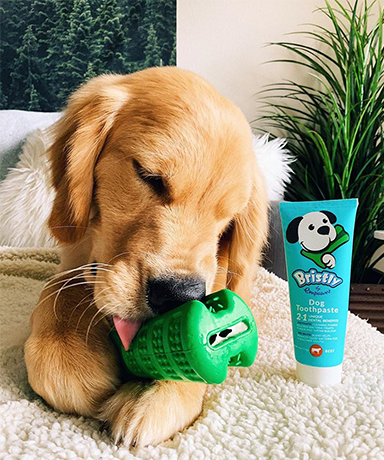Your Cart is Empty

Time to make your inbox pawsome
Sign up today and get 10% OFF your first purchase!


Believe it or not, nearly 80% of dogs ages three and up have gum disease, also known as periodontal disease. Unfortunately, this illness can’t be reversed, but it can be prevented with a dental health routine that involves brushing!
The treatment for gum disease will begin with a thorough exam, usually during their yearly physical and x-rays to determine the extent of the damage. Your vet may prescribe your pup antibiotics to prevent the spread of bacteria during any dental work.
The treatment plan will depend on what the vet finds during the initial examination and the stage of gum disease.
For stages one and two, your vet will most likely recommend a thorough cleaning. In stages three or four of periodontal disease, your dog will likely require a cleaning along with more treatment. There are various procedures that your vet may use to remove teeth, tissue, and diseased gums.
While it may be challenging to put your dog through surgery, it will ultimately be the best option for those with advanced periodontal disease.
Following your dog’s surgery, you will have to plan to spend lots of together to ensure his or her safety and wellness. According to Your Dog Advisor, “Your dog will likely still be drowsy from the effects of the anesthetic, and it can make them confused, uncoordinated, distressed and unsettled.” It’s important to make sure that they are as comfortable as possible. Most dogs will experience anxiety from not feeling like themselves due to the anesthetic. If your dog has anxiety just going to a regular vet visit, you can expect this feeling to recur after surgery.
Your Dog Advisor also recommends making sure that you or a family member are available to supervise them at all times to make sure that they have access to water.
While your vet will be able to determine whether your dog has gum disease, you can determine whether or not there is a cause for concern at home. If you notice any redness or swelling of the gums or tartar, this could be a sign of periodontal disease.
Also, if you notice your dog isn’t eating as often as they usually do, it could be a sign that something in their mouth is hurting them. If you notice any unusual behavior, make sure to notify your vet.
